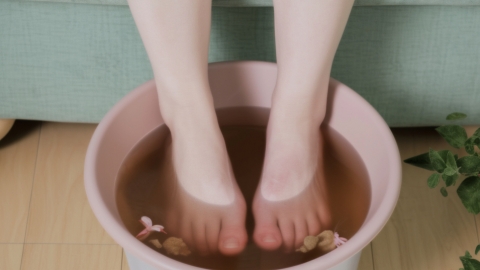Does not sweating during a foot bath with mugwort indicate a cold body constitution?
Generally speaking, whether not sweating during foot soaking with mugwort indicates cold body constitution needs to be determined according to specific circumstances. If accompanied by consistently cold hands and feet, significant intolerance to cold, and more difficulty adapting to cold environments in winter, it may be caused by a cold body constitution. If the lack of sweating is merely due to insufficient soaking time, low water temperature, or insensitivity of the skin to temperature, it usually does not indicate a cold body constitution. Detailed analysis is as follows:

Individuals with a cold body constitution often have insufficient yang energy, which hinders smooth circulation of blood and qi. Even with warming mugwort foot soaking, it is difficult to expel internal cold through sweating. There is typically no noticeable sweating throughout the process, and the feeling of warmth after soaking lasts only briefly.
A lack of sweating not caused by a cold body constitution is commonly due to short soaking duration, low water temperature, or other factors. Additionally, some people have skin that is less responsive to temperature, so even when the body has warmed up, sweating may not easily occur.
It is recommended to precisely control the water temperature and duration during foot soaking and choose a quiet environment to allow the body to fully relax. In daily life, mild exercises such as brisk walking or yoga can help promote circulation and enhance metabolism. If prolonged foot soaking consistently fails to induce sweating and is accompanied by other discomforts, it may be helpful to adjust lifestyle habits such as sleep patterns and diet, and continue observing changes in physical condition.




